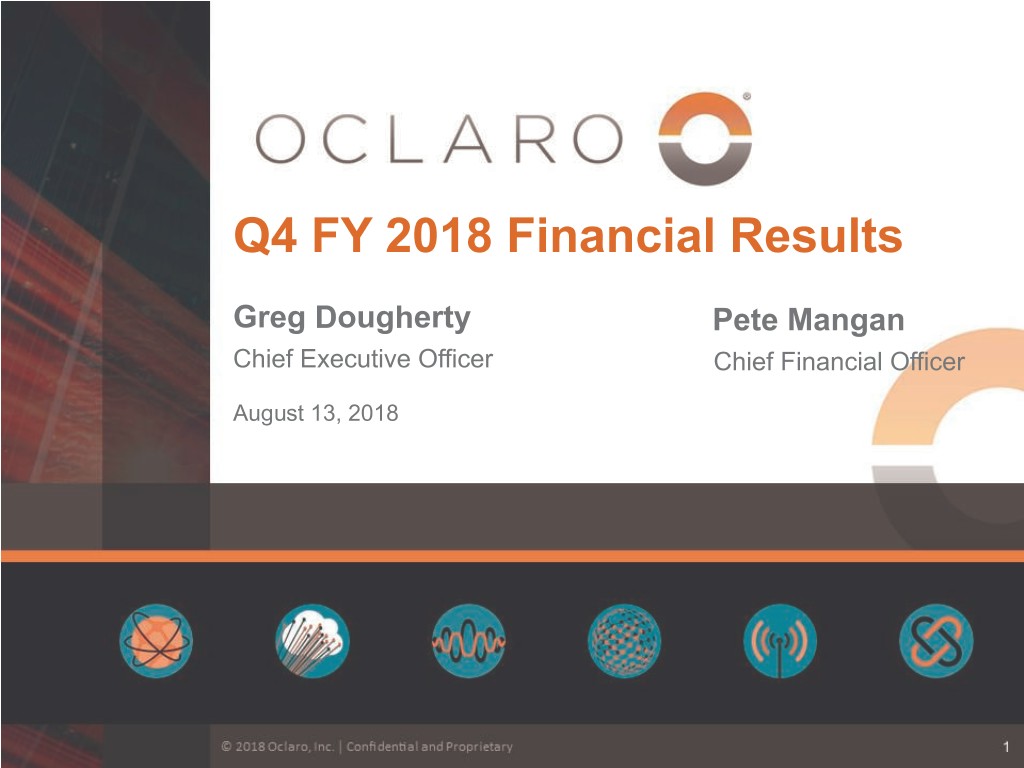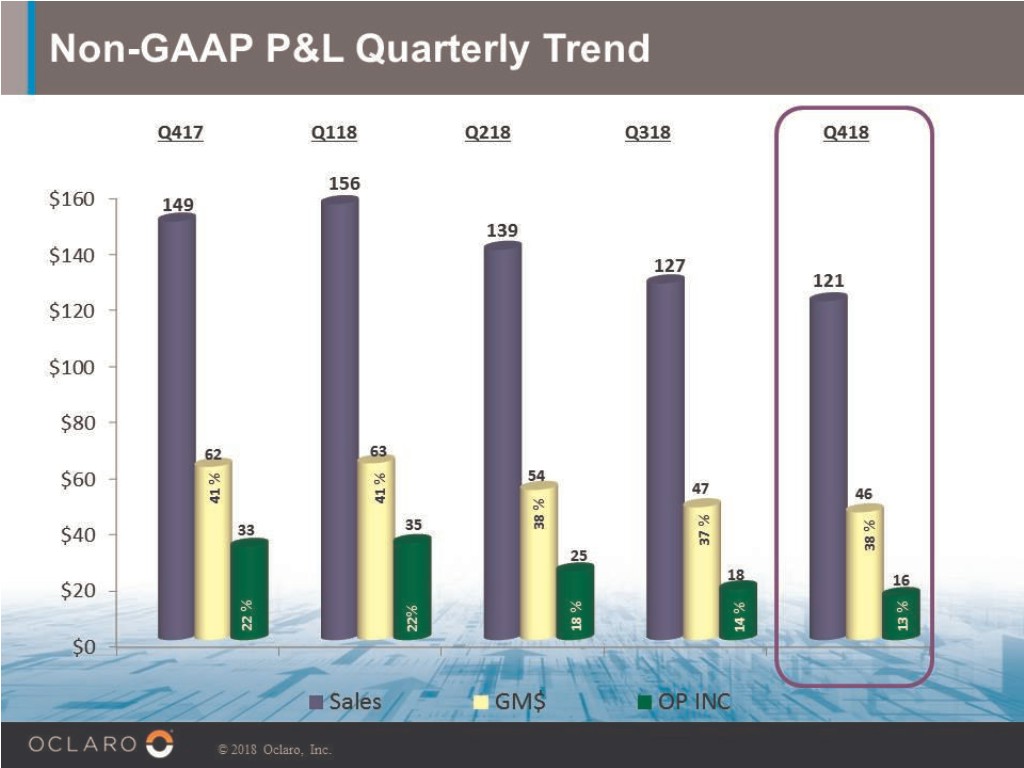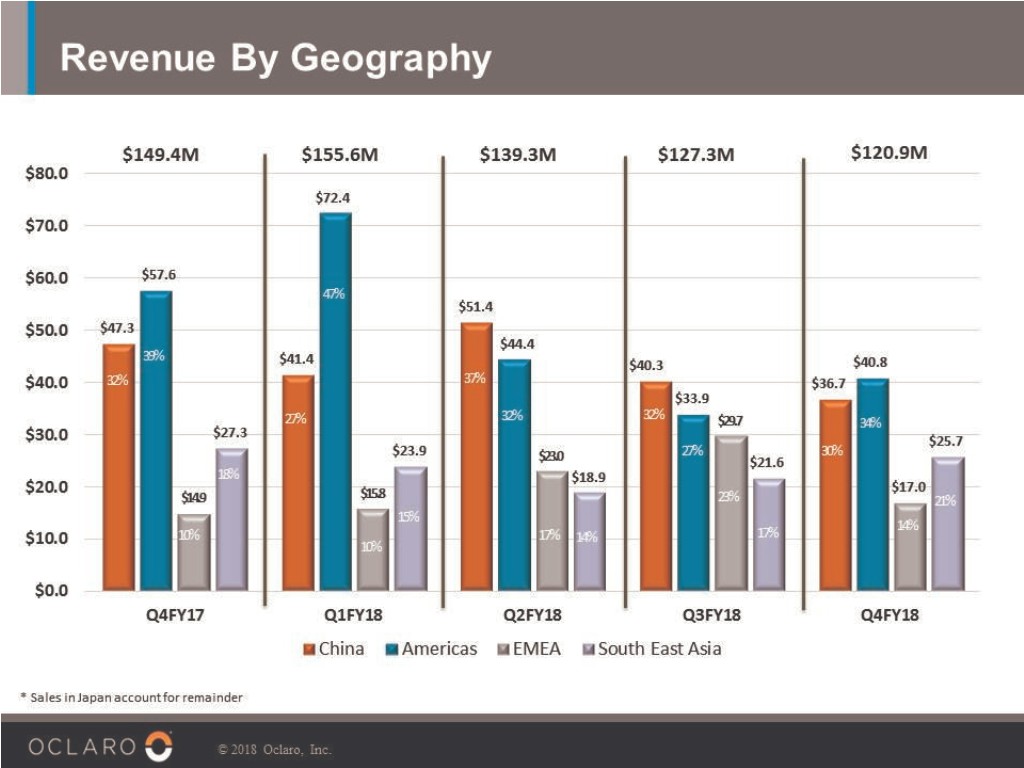
Safe Harbor Statement This presentation contains statements about management’s future expectations regarding the plans or prospects of Oclaro and its business, and together with the assumptions underlying these statements, constitute forward-looking statements for the purposes of the safe harbor provisions of The Private Securities Litigation Reform Act of 1995. Investors should not unduly rely on such forward-looking statements. These forward-looking statements include statements concerning (i) the timing of the closing of our pending merger with Lumentum, (ii) Oclaro’s future financial performance and operating prospects and (iii) the statements in our CEO’s quote. Such statements can be identified by the fact that they do not relate strictly to historical or current facts and may contain words such as “anticipate,” “estimate,” “expect,” “forecast,” “project,” “intend,” “plan,” “believe,” “will,” “should,” “outlook,” “could,” “target,” “model,” "objective," and other words and terms of similar meaning in connection with any discussion of future operations or financial performance. There are a number of important factors that could cause our actual results or events to differ materially from those indicated by such forward-looking statements, including (i) the risk that our pending merger with Lumentum Holdings Inc. does not close, due to the failure of one or more conditions to closing, (ii) disruption from the merger making it more difficult to maintain our customer, supplier, key personnel and other strategic relationships, (iii) uncertainty as to the market value of the Lumentum merger consideration to be paid in the merger, (iv) the risk that required governmental approvals of the merger (including China antitrust approval) will not be obtained or that such approvals will be delayed beyond current expectations, (v) the risk of litigation in respect of either Oclaro or Lumentum or the merger, (vi) our dependence on a limited number of customers for a significant percentage of our revenues, (vii) competition and pricing pressure, (viii) our ability to effectively manage our inventory, (ix) the absence of long-term purchase commitments from many of our long-term customers, (x) our ability to meet or exceed our gross margin expectations, (xi) the effects of fluctuations in foreign currency exchange rates, (xii) our ability to obtain governmental licenses and approvals for international trading activities or technology transfers, including export licenses, (xiii) our ability to timely develop, commercialize and ramp the production of new products to customer required volumes, (xiv) our ability to respond to evolving technologies, customer requirements and demands, and product design challenges, (xv) the effect of tariffs or other restrictions on trade between the U.S. and China, (xvi) our dependence on a limited number of suppliers and key contract manufacturers, (xvii) our ability to grow our revenues in the future by increasing the percentage of sales associated with new products, (xviii) potential operating or reporting disruptions that could result from the implementation of our new enterprise resource planning system, (xix) our manufacturing yields, (xx) our ability to conclude agreements with our customers on favorable terms, (xxi) the impact of additional restructuring charges we may take in the future, (xxii) the risks associated with delays, disruptions or quality control problems in manufacturing, (xxiii) fluctuations in our revenues, growth rates and operating results, (xxiv) changes in our effective tax rates or outcomes of tax audits or similar proceedings, (xxv) the impact of financial market and general economic conditions in the industries in which we operate and any resulting reduction in demand for our products, and (xxvi) other factors described under the caption "Risk Factors" and elsewhere in the documents we periodically file with the SEC. © 2018 Oclaro, Inc.





